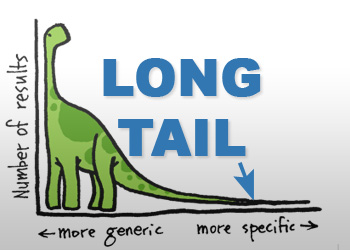7 Content Marketing Tips for First-Time Bloggers

You may have heard of the many ways a well-conceived content marketing strategy can benefit a blog or business by helping you in developing valuable content, establishing yourself as an industry leader and generally improving the connection between you and your audience.
Whilst content marketing may be the ideal method for bloggers to grow their readership and get a foothold in their niche, it can also be a slow, painstaking process to developing content that both engages and drives readers to convert. Thankfully, we’ve come up with 7 top tips to help you on your way to developing a successful content marketing strategy.
Content Marketing Tips for First-Time Bloggers
1. Define your strategy and goals
Source. leu.edu
When it comes to content marketing, you are creating or curating content with a specific set of goals in mind. These goals may differ slightly from each campaign to the next, but almost always adhere to at least 1 of these 3 things:
- Content tailored to engage a specific class of reader or provide a solution – content marketing shouldn’t always be about selling, it should aim to provide entertainment, education or a solution to a problem foremost
- Content optimized to draw in highly relevant, inbound traffic – relevant traffic is high converting traffic so content should be optimised (in terms of keywords, message, typeface, images, colours) to draw these users in.
- Content designed to increase conversions – using call to action buttons and suggestive copy in such a way that it channels users into your sales funnel
2. Utilize all different types of content
Variety is the spice of life, so they say, and this adage should indeed permeate into your content marketing strategy. Let’s face it; if your readers like your blog, they’re going to stick around to read it – but only if their attention permits.
Using a variety of content types such as videos, images, infographics and user generated content in your content marketing efforts can go a long way in retaining your audience’s attention.
Be vigilant though and only be liberal with content types when it is needed. There’s no point cramming videos, images and infographics into every piece of content you make otherwise your readers’ may get a bit overwhelmed.
3. Exercise those long-tail keywords

These days, content marketing skills and SEO skills seem to be converging into one and as any clued-up SEO practitioner will tell you – long tail keywords bring you relevant traffic.
Let’s say your website sells coffee tables. It’s all fine and well including keywords such as ‘wooden coffee table’ and glass coffee table’, however, you are more likely to receive browsers than someone who is ready to buy. Instead, try being a bit more specific in your wording.
Using keywords like ‘glass coffee table with walnut trim’ or ‘large oak coffee table’ is likely to draw in those customers who know exactly what they want. Reaching these high relevancy prospects can in fact be just as valuable as reaching 10 regular users, so this tactic has the potential to pay off.
If you’re a bit stuck on getting started with long tail keywords, I recommend you start off with this 3-part blog post from our archives.
4. Repurpose and reuse old content
If there’s one thing marketers know, it’s that high quality, engaging pieces of content aren’t whipped up in a couple of hours. It can sometimes take days or weeks of research, strategy and collaboration to produce a fresh, unique piece of content that your audience will love, share and love to share. However, there are often time and budget constraints that effect output and it’s not always possible to deliver unique content every time. This is when reusing and repurposing past content can give you an edge!
This can take many forms, for example you have a high performing article you released last year that still generates a fair amount of traffic. You decide to place a call to action button within the article to direct users to your shop to see if it increases your conversions.
This is just one brief example of repurposing old content to perform a new task, though there are many ways you could action this, such as taking the idea from an old article and making it into a video, or using the data collected from a past campaign developed into an infographic – the choices are endless.
5. Don’t be afraid to leverage pop culture
Source: Newsjacking
Also known as newsjacking, brands love to produce content that refers to or fits into popular culture in some form or another. This can be a particularly advantageous tactic when content marketing as it provides potential readers with a pre-existing & real-life topic – increasing the chances of shares and engagement as you’re tapping into an existing audience.
One example of successful newsjacking involves Virgin Holidays. Around the time that the same-sex marriage bill was being passed in the USA, Virgin decided to piggyback on the bill’s unwavering attention in the media with the line: ‘Same-sex marriage bill passed. Time for a honeymoon’.
This campaign was successful because not only did they coincide their campaign with a culturally relevant topic, but they also aimed to align the brand with pro same-sex marriage, painting the brand in a positive and progressive light, doing wonders for brand identity. They likely received increase in custom from the gay community – not that there’s any way to track this demographic with analytics!
6. Find the weird angle to stand out
Customers love it when brands are different and do wacky and unorthodox things to get noticed. Whether they’re guerrilla marketing, producing infographics or engaging with their followers on social media – brands tend to get more interaction if they break the mould and go places where their competitors are gingerly afraid to step.
An example – a florist’s Twitter account. They are aware that their followers don’t have the need for a florist every day, or even every week, so instead of pushing tweet after tweet of samey, self-promotional content, they decided it would be better to tweet out funny, culturally relevant content to both satisfy current followers and grow their customer base through the power of humour.
7. Think evergreen
Evergreen content is a concept that is often misunderstood, though essentially it is a piece of content that is likely to still be relevant and useful for years to come. Things like news, shopping trends and financial reports are not evergreen content since the information become irrelevant after a period of time. Some common forms of evergreen content include:
- Wikipedia-style informational content
- Instructional content and ‘how-to’ guides
- Product reviews
- Top 100 style posts
There are some best practices when it comes to producing evergreen content such as writing for a beginner audience. No matter how in-depth or informative your post may be, experts are unlikely to be searching for assistance so don’t tailor to them. It is also important to cater to specific topics, just like our long-tail keywords, the more specific you can make your content, the more relevant your audience will be.
The most successful content marketing combines long-tail keywords with evergreen topics, maximising your chance of bringing in highly relevant traffic, for a while to come.




Thanks for a great article Alex.
One tactic that I use looks at both repurposing (point 4) and evergreen content (point 7). When devising content, I categorise whether this will be evergreen or not.
For the non-evergreen content, I look at the content which has successfully engaged people and then post updated content. So for instance, ‘Five emerging trends in SEO’ can then always be re-written and re-invigorated the for the next year. So, for instance, it could now be titled ‘The top five emerging SEO trends in 2017’
Really a helpful article, I was confused how to write content but your article help me a lot, because content is the main part of SEO and your 7 tips is very helpful for my website.
Every time writing a new content is very tough part of my work. Specially, Point 4 (Repurpose and reuse old content) help me to generate traffic from old content.
Thanks Alex.